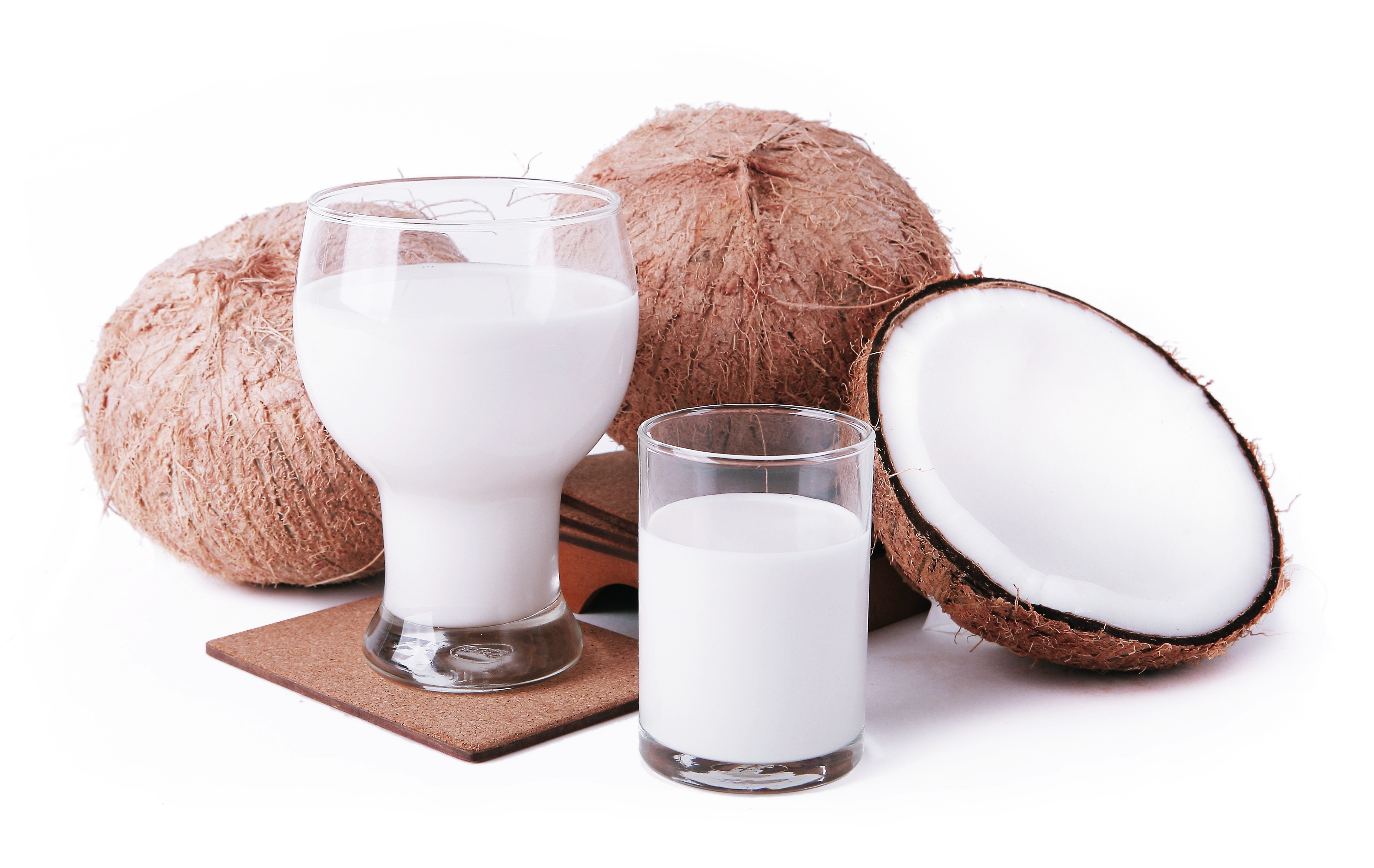There are many coconut milk benefits. Coconut milk is rich for your health and relatively simple to use but there are some important things you should know about it.
Luckily, we are going to cover just about everything you need to know about coconut milk throughout this blog.
Not to be confused with coconut water or coconut oil, coconut milk is a trendy and tasty alternative to regular cow’s milk that can provide numerous health benefits. Many cultures and cuisines commonly utilize coconut milk as part of a regular diet including…
-
- Thai
-
- Southeast Asian
-
- Hawaii
-
- India
-
- South American (certain countries)
- Caribbean (certain countries)
Coconut milk’s heavy or thick consistency, creamy texture and rich taste can be enticing. Coconut milk can be easily incorporated into your daily diet by using it in your coffee or pouring some over fresh berries. In addition, there are alternative versions of coconut milk that contain less fat and calories.
Ready to go coco for coconut milk? Keep reading to learn all about the benefits, uses, and everything coconut milk has to offer.
Related Article: Natural Lube – How To Make Homemade Lube For Intimacy
What Are The Benefits Of Using Coconut Milk?
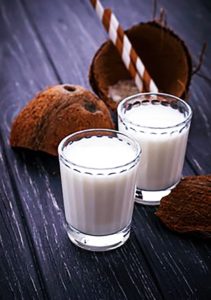

#1. Lose weight using coconut milk
Medium-chain triglycerides (MCTs) are found in coconut milk. Research and studies have linked MCTs to weight loss and reduction of body weight and waist size. Using a process known as thermogenesis or heat production, MCTs can stimulate energy.
Overall MCTs found in coconut milk can provide benefits including:
-
- Weight loss
-
- Body composition and metabolism
-
- Reduce body weight and waist size
-
- Reduce appetite and calorie intake (compared to other fats)
- Temporary boost calorie expenditure and fat burning
Longer chain fats typically do not travel from the digestive tract directly to the liver. However, MCTs do travel from the digestive tract directly to the liver since they are a medium-chain fatty acid. Once they are in the liver they are then used for ketone production or energy. There’s a decreased chance that MCTs will be stored as fat.
MCTs have also been known to balance unstable gut microbiota. Obesity can be a result of unstable gut microbiota meaning that coconut milk can help prevent obesity. Although these benefits sound appealing, you should note that coconut milk typically contains small amounts of MCTs. This means it’s probably not the secret to dropping weight overnight. In most cases it can benefit your health and significant effects on body weight are unlikely.
#2. Improve heart and cholesterol health using coconut milk
Due to the high saturated fat content in coconut milk you may be wondering if it’s really a heart healthy choice. Minimal research has been done on coconut milk leaving many questions unanswered. However, the small amount of research done does show potential benefits for people with normal or high cholesterol levels. You may hear some people support this belief and others deny it. So you may need to keep doing your research and learning about your body to make the best decision for you and your health.
Keep in mind that the source of saturated fat can affect how your body reacts. Your genetics can also impact how your body metabolizes saturated fats and how they impact your health. However, coconut milk is high in fat and calories. Even if coconut milk does in fact improve heart health it should be used in moderation. Coconut oil usually has high fat and cholesterol levels compared to coconut milk.
#3. Boost your immune system using coconut milk
As we mentioned above, coconut milk can contain lauric acid. It’s believed by many researchers that lauric acid can boost and support your immune system. Lauric acid has also been shown to contain antimicrobial and anti-inflammatory properties. Coconut milk can boost your immune system while helping you fight viruses and bacteria. Some studies have even shown coconut milk to have the ability to decrease stomach ulcer size.
How Can You Use Coconut Milk?
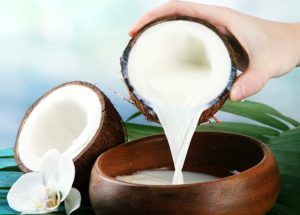

Some uses of coconut milk include:
#1. Substitute dairy with coconut milk
Whether you’re lactose intolerant or vegan, coconut milk is a yummy dairy substitute. Coconut milk can be used in…
-
- Coffee
-
- Whipped into cream
-
- Baked goods
- Dairy-free ice cream
Coconut can be intertwined with just about any flavor you desire including mint chip, chocolate, peanut butter, and so on. In addition, you can control the texture of coconut milk if you make your own or use powder coconut milk.
#2. Use coconut milk for dips and sauces
Now don’t take this literally, you will want to add some spices, sweeteners, and additional ingredients to make a memorable coconut milk dip or sauce. However, the possibilities can be unlimited for dips and sauces containing coconut milk. You can discover ideas on the Internet or get creative on your own. The more you use coconut milk the more familiar you will become on how to best use it. Lime, curry, honey, ginger, soy sauce, and more are all delicious ingredients to combine with coconut milk.
#3. Spruce up cocktails and smoothies using coconut milk
Do you love the taste of a refreshing cold Pina colada? Now imagine a Pina colada tasting smoothie for breakfast with a hint of banana! Coconut milk can be used to add flavor and nutritional benefits to smoothies, juices, cocktails, and more.
#4. Coconut milk and seafood…yummy!
Seafood and coconut milk are known to have a passionate love affair for one another. They complement each other magnificently when it comes to cooking. Try coconut milk with ceviche, curry, noodle dishes, stir fries, and so much more. Coconut milk offers an easy way to enhance simple dishes such as rice noodles and shrimp or DIY instant noodles.
#5. Curry loves coconut milk
Curry can be prepared in a variety of ways and can include a variety of ingredients. Coconut milk can be used in curry recipes for texture and taste. In fact many curry recipes require coconut milk so you probably won’t have to search hard to find one that includes it.
#6. Coconut milk for dessert
Coconut milk can be used to enrich many dessert recipes. Oh and as we already mentioned – coconut milk can be a dairy substitute. This means you can replace recipes that call for dairy with coconut milk. A dash of coconut milk can be added to just about any baking recipe.
How Many Classifications of Coconut Milk Exist?


Thick and thin coconut milk can be differentiated by how they are made. Grated coconut flesh is needed to make both.
Some types of coconut milk classifications include:
-
Thick Coconut Milk
Thick coconut milk begins as solid coconut flesh that is then finely grated. Next, it is simmered or boiled in water. The mixture produced must then be strained through cheesecloth. Thick coconut milk is the result of this process. Thick coconut milk is most commonly used in thick sauces and desserts.
-
Thin Coconut Milk
Thin coconut milk requires thick coconut milk to be made prior. There should be leftover grated coconut in the cheesecloth. The remaining grated coconut is simmered in water. Lastly, to produce thin coconut milk, the straining process is repeated. Thin coconut milk is most commonly used in thick sauces and soups.
Should You Buy Canned, Boxed, Powdered, or Refrigerated Coconut Milk?
A simpler alternative to making your own coconut milk is purchasing it at the store. Coconut milk is available in canned, boxed, and powdered forms at most grocery stores. Canned, boxed, and powdered coconut milk is usually used for cooking and baking. Refrigerated coconut milk is more like an enjoyable beverage rather than a cooking ingredient. There are pros and cons to each type of coconut milk so keep reading and we’ll help you determine which one to purchase.
#1. Canned Coconut Milk
Coconut milk has been growing in popularity forcing most grocery stores to carry at least one brand. For a larger selection of coconut milk you should visit your local Asian grocery store or market. Some of them will carry a dozen or more brands of coconut milk for you to choose from. It can be beneficial to your health to pay attention to the brand and contents of canned coconut milk. You should try to find canned coconut milk that contains primarily coconut and water. It’s recommended to steer clear of canned coconut milk that contains preservatives, stabilizers, or emulsifiers. In addition, you may want to find a BPA-free brand of canned coconut milk.
If you have a sensitive digestive system you may want to keep an eye out for guar gum, a commonly used additive. It is known to cause or increase digestive problems even though it’s a naturally derived additive.
#2. Boxed Coconut Milk
BPA can be a concern with canned coconut milk, making boxed coconut milk seem like a better option. Again it’s important to pay attention to the brand and contents of boxed coconut milk. Similar to canned coconut milk you should look for a box or carton that contains primarily coconut and water. Some brands of boxed coconut milk contain similar additives to canned coconut milk that you should avoid.
#3. Coconut Milk Powder
Coconut milk powder can be a flavorful substitute for canned or boxed coconut milk. Simply mix the powder with water to make the portion of coconut milk you desire. You can also control the consistency by how much water you add to the powder mix.
Dried coconut meat is typically mixed with milk or casein or other additives to produce coconut milk powder. Coconut milk powder can usually be found in small spice like packets or cans. Similar to canned coconut milk, BPA may be a concern with canned coconut milk powder.
Compared to canned and boxed coconut milk, coconut milk powder is a cost effective substitute. In addition it’s easy to use for things such as sprinkling in smoothies or mixing into a sweet glaze for a cake.
#4. Refrigerated Coconut Milk
If you are looking to cook or bake with coconut milk you should use canned, boxed, or powdered coconut milk, or make your own. While refrigerated coconut milk can be a refreshing and tasty beverage it isn’t recommended for cooking in most cases.
In addition, it may be lacking nutrients and health benefits compared to more pure forms of coconut milk. It’s often diluted with water and additives such as carrageenan, guar gum, sweeteners, and more. Refrigerated coconut milk can be used for your morning iced coffee or smoothie.
How Do You Select The Best Coconut Milk To Purchase?


Here are some tips and trick to help you select the best and healthiest coconut milk:
-
- Study the label and contents. As we discussed earlier, you should avoid purchasing coconut milk with additives. Read the labels of coconut milk you’re considering purchasing and look for one that contains only coconut and water.
-
- Canned coconut milk should be purchased in BPA free cans. Cans that contain BPA can seep into the food contents and cause potential hazards for the consumer. Some brands of canned coconut milk use BPA-free cans. You should locate these brands and do your best to purchase them. If you cannot locate BPA-free canned coconut milk at your local store, you should check the coconut milk in cartons.
-
- Coconut milk by the carton is often a healthier option. Purchasing coconut milk in a carton can offer a few benefits for your health. If you are looking for coconut milk with reduced fat and less calories you should check out unsweetened coconut milk sold in cartons. It can also help you avoid the search for BPA-free cans.
- Try light coconut milk as a lower-calorie option. Light coconut milk can usually be found in can form. If you are cooking with coconut milk, you should know that light coconut milk is usually thinner. Light coconut milk usually contains about half the calories of regular coconut milk. A half-cup of regular coconut milk contains about 276 calories compared to a half-cup of light coconut milk that contains about 125 calories. Making your own coconut milk can also be a solution for lower calorie coconut milk. Keep reading to find out more about making your own coconut milk.
Related Article: Best Essential Oil Brands
What Are The Benefits Of Making Your Own Coconut Milk?


#1. Avoid additives in coconut milk by making your own.
Additives should be avoided and in some cases must be avoided. Unfortunately, many brands of commercial coconut milk contain additives. Making your own coconut milk gives you control over what goes into your coconut milk and your body. It can be a wise investment for your health to take the time to make your own coconut milk.
#2. Save money by making your own coconut milk.
Making your own “organic” coconut milk can be a more affordable option by about 50%. Although it requires a minimal investment of your time, you should try making your own coconut milk as a healthier option.
#3. Produce the amount of coconut milk you need by making your own.
If you plan to use coconut milk as part of your daily diet you should know how to make it yourself. This can eliminate the problem of running out of canned coconut milk or wasting food.
How Do You Make Your Own Coconut Milk?


#1. Dried coconut milk – DIY style
To make dried coconut milk on your own you will need…
-
- Water
-
- Unsweetened dried (desiccated) coconut
-
- Blender
- Cheesecloth-lined fine mesh sieve
3 easy steps to make dried coconut milk
When selecting your dried coconut you should make sure it’s unsweetened. The only ingredient it should contain is dried or desiccated coconut. We recommend using chipped coconut. It can be used to make your own coconut milk along with a variety of other uses including topping curries, salads, desserts, and more.
Step #1: Place coconut in your blender and top with very warm water. You should not use boiling water, as that can be harmful to your blender. The water should simply be very warm or slightly hot.
Step #2: Place the lid on the blender and cover the lid with a kitchen towel or similar object. Hold down the lid using the towel to avoid spills and unwanted messes. Now turn the blender on and blend for about five minutes.
Step #3: Using your cheesecloth lined fine mesh sieve, pour the mixture through. Do your best to squeeze out as much liquid as possible. Tongs can be used to help squeeze the water out to avoid burns from the hot water.
Ta-da! Now you have homemade dried coconut milk. The leftover coconut meat can be saved and reused in baked goods, smoothies, and more.
#2. Coconut milk using a fresh coconut
You can also make coconut milk using fresh coconut. Although, it tends to be more labor-intensive, but it can also be more fun!
To make coconut milk with a fresh coconut you will need:
-
- Fresh, mature brown coconut
-
- Water
-
- Screwdriver
-
- Hammer
-
- Bowl
-
- Blender
-
- Kitchen Towel
- Cheesecloth lined fine mesh sieve
6 steps to make coconut milk using a fresh coconut
Step #1: One of the most challenging parts of this method is getting the meat from the fresh coconut. You will need to punch a few holes in the “eyes” of the coconut. A screwdriver is probably the best tool to use to punch the holes. Firmly hold the screwdriver in place where you want the hole and gently tap it with a hammer. Tap it until you find the meat of the coconut. You should be able to extract enough meat with 1-2 holes.
Step #2: Place the coconut holes over your bowl or sink and shake the water out.
Step #3: Now for the fun part, hold the coconut in your hand and crack the coconut open. Your hammer can be a useful tool for cracking the coconut open. You should aim to crack the coconut open along its equator for best results. Once you have clearly cracked the coconut you can pull it apart with your hands.
Step #4: Breaking the flesh away from the shell is another challenging part. Although it’s rare, it’s possible that the flesh will come out when you crack the coconut in half. However, in most cases you will need to place each half of the coconut on a kitchen towel with the inside facing down. Now use your hammer several times all around the coconut. This should make it much easier to pull the meat off the coconut.
If you are having troubles you can pull the flesh off using your fingers with the help of a pairing knife to pry it off. Once you have successfully collected the meat of your coconut you should rinse it with some water. If some pieces still have brown skin attached you can just leave it.
Step #5: Now it’s time to start seeing your hard work pay off! Take your chunks of coconut meat and put them in the blender. Pour very warm water on top and blend for about three minutes. The mixture should be very thick.
Step #6: Similar to making dried coconut milk you will take the blended mixture and pour it through a cheesecloth-lined fine mesh sieve. Do your best to squeeze out as much liquid as possible.
Great work! Now you have homemade coconut milk made with a fresh coconut. Just like after making dried coconut milk you can save and reuse the leftover coconut meat if you wish.
Related Article: Activated Charcoal
Coconut Milk vs. Coconut Water
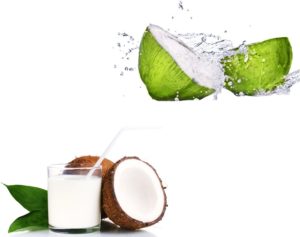

Coconut water occurs naturally while coconut milk does not. The white coconut flesh is combined with water in order to produce coconut milk. Generally, coconut milk is about 50% water compared to coconut water, which is about 94% water.
Although coconut milk contains a generous number of calories, it can be justified by its equally generous amount of nutrients. Compared to coconut milk, coconut water contains significantly less fat and nutrients.
Coconut Milk vs. Coconut Oil
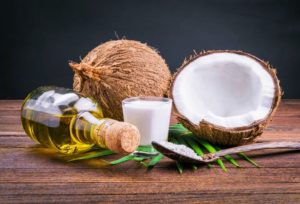

Coconut oil offers many other benefits including skin care, hair care, and more. It’s a trendy product that can help you maintain your youth by improving how you look and feel. Coconut oil is generally much more expensive than coconut milk but the cost can be justified by the amount of uses it can offer. In addition, a block of coconut oil can have a life span of about two years before spoiling.
In conclusion, coconut milk is a versatile product that is rich in taste and health benefits but should be used in moderation. There are little to no side effects associated with coconut milk unless you’re allergic to coconuts. Luckily, in comparison to common allergies such as tree nut and peanut allergies, coconut allergies are much less common.
